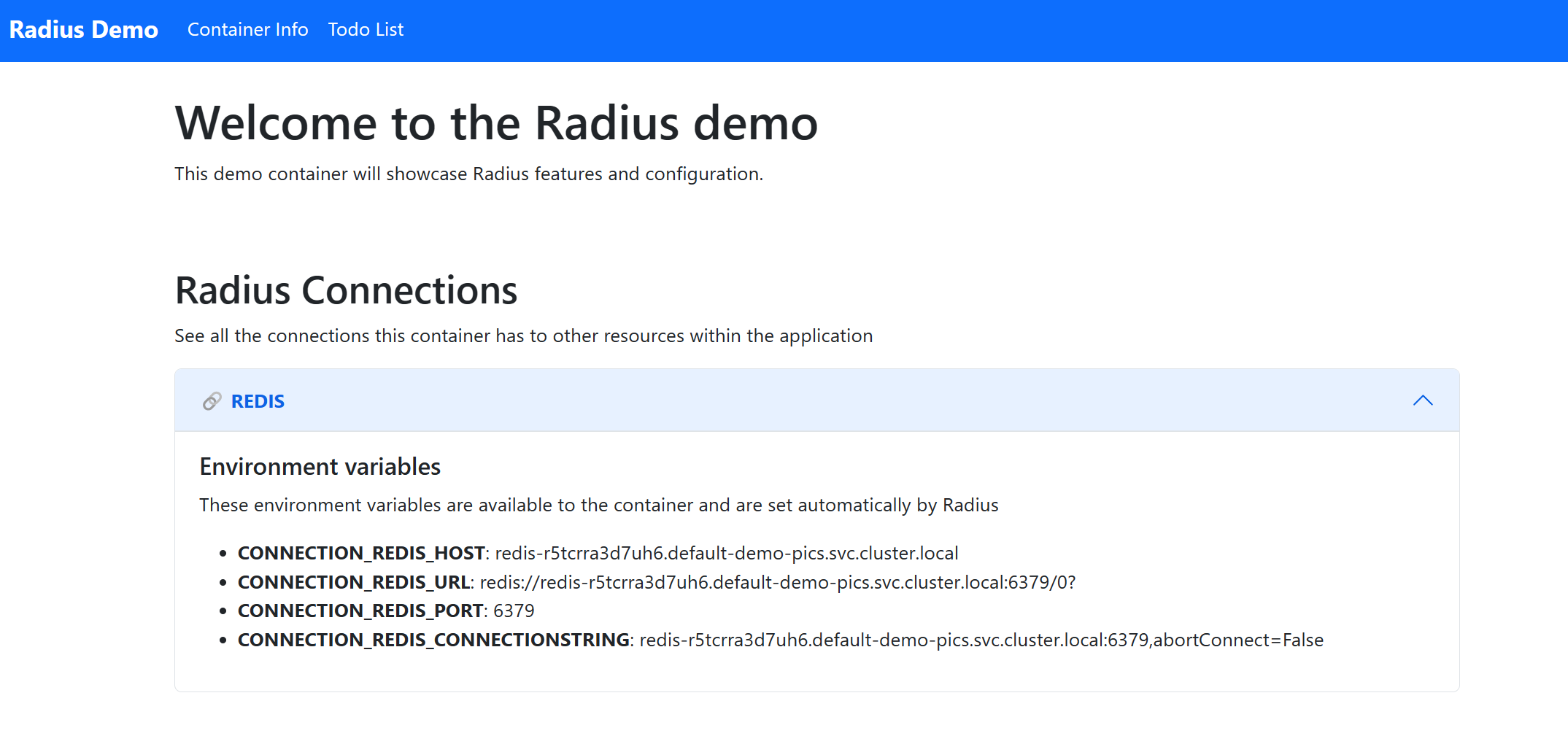How-To: Author portable resources
Categories:
This guide will teach you how to author a portable resource for your Radius Application.
Prerequisites
Before you get started, you’ll need to make sure you have the following tools and resources:
Step 1: Add a portable resource
Portable resources provide abstraction and portability to Radius Applications. Radius currently offers options to manually provision the resources or automatically provision them via Recipes:
Recipes handle infrastructure provisioning for you. You can use a Recipe to provision a Redis cache, using your environment’s default Recipe.
Create a file named app.bicep and paste the following:
extension radius
@description('Specifies the environment for resources.')
param environment string
@description('Specifies the application for resources.')
param application string
resource redis 'Applications.Datastores/redisCaches@2023-10-01-preview'= {
name: 'myredis'
properties: {
environment: environment
application: application
}
}
To learn more about Recipes visit the Recipes overview page.
You can also manually manage your infrastructure and use a portable resource to abstract the details. Create a file named app.bicep and paste the following:
extension radius
@description('Specifies the environment for resources.')
param environment string
@description('Specifies the application for resources.')
param application string
resource redis 'Applications.Datastores/redisCaches@2023-10-01-preview' = {
name: 'myredis'
properties: {
environment: environment
application: application
resourceProvisioning: 'manual'
username: 'myusername'
host: 'mycache.contoso.com'
port: 8080
secrets: {
password: '******'
}
}
}
Step 2: Add a container
In your Bicep file app.bicep, add a container resource that will connect to the Redis cache. Note the connection to the Redis cache automatically injects connection-related environment variables into the container. Optionally, you can also manually access properties and set environment variables based on your portable resource values.
resource container 'Applications.Core/containers@2023-10-01-preview' = {
name: 'demo'
properties: {
application: application
container: {
image: 'ghcr.io/radius-project/samples/demo:latest'
env: {
// Manually access Redis connection information
REDIS_CONNECTION: {
value: redis.listSecrets().connectionString
}
}
ports: {
web: {
containerPort: 3000
}
}
}
connections: {
// Automatically inject connection details
redis: {
source: redis.id
}
}
}
}
Step 3: Deploy the app
-
Run your application in your environment:
rad run ./app.bicep -a demo -
Visit localhost:3000 in your browser. You should see the following page, now showing injected environment variables:

Cleanup
Run rad app delete to cleanup your Radius application, container, and Redis cache:
rad app delete -a demo
Further reading
Feedback
Was this page helpful?
Glad to hear it! Please feel free to star our repo and join our Discord server to stay up to date with the project.
Sorry to hear that. If you would like to also contribute a suggestion visit and tell us how we can improve.